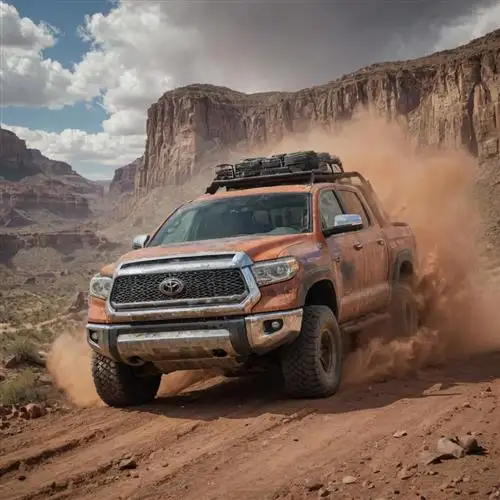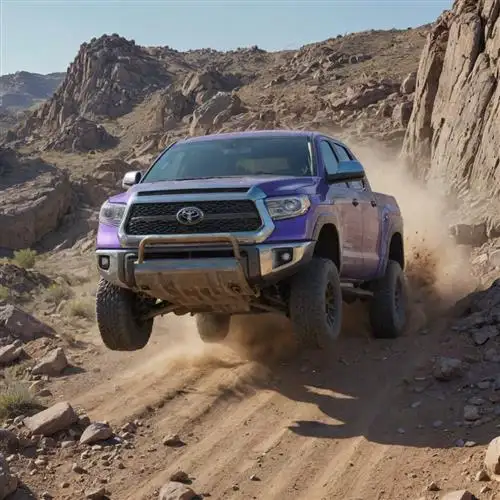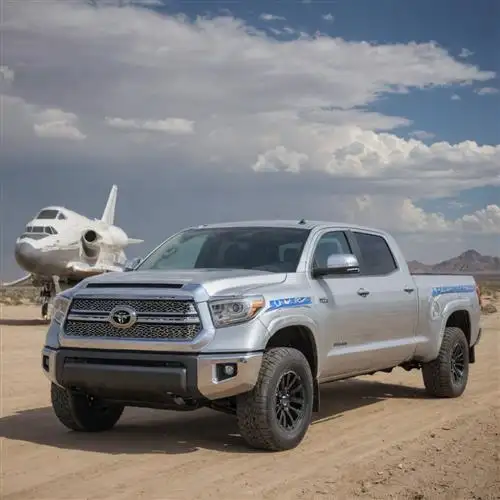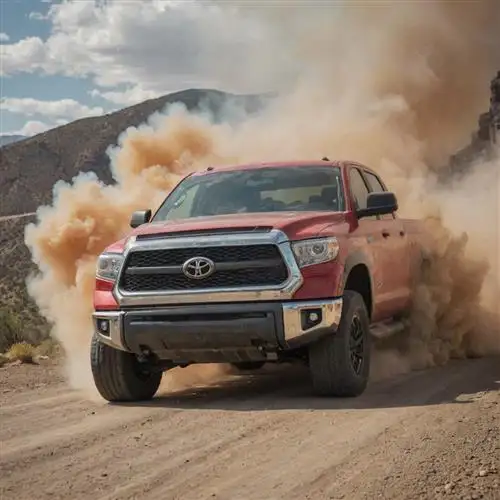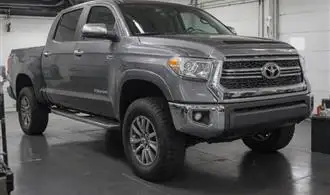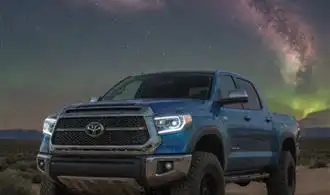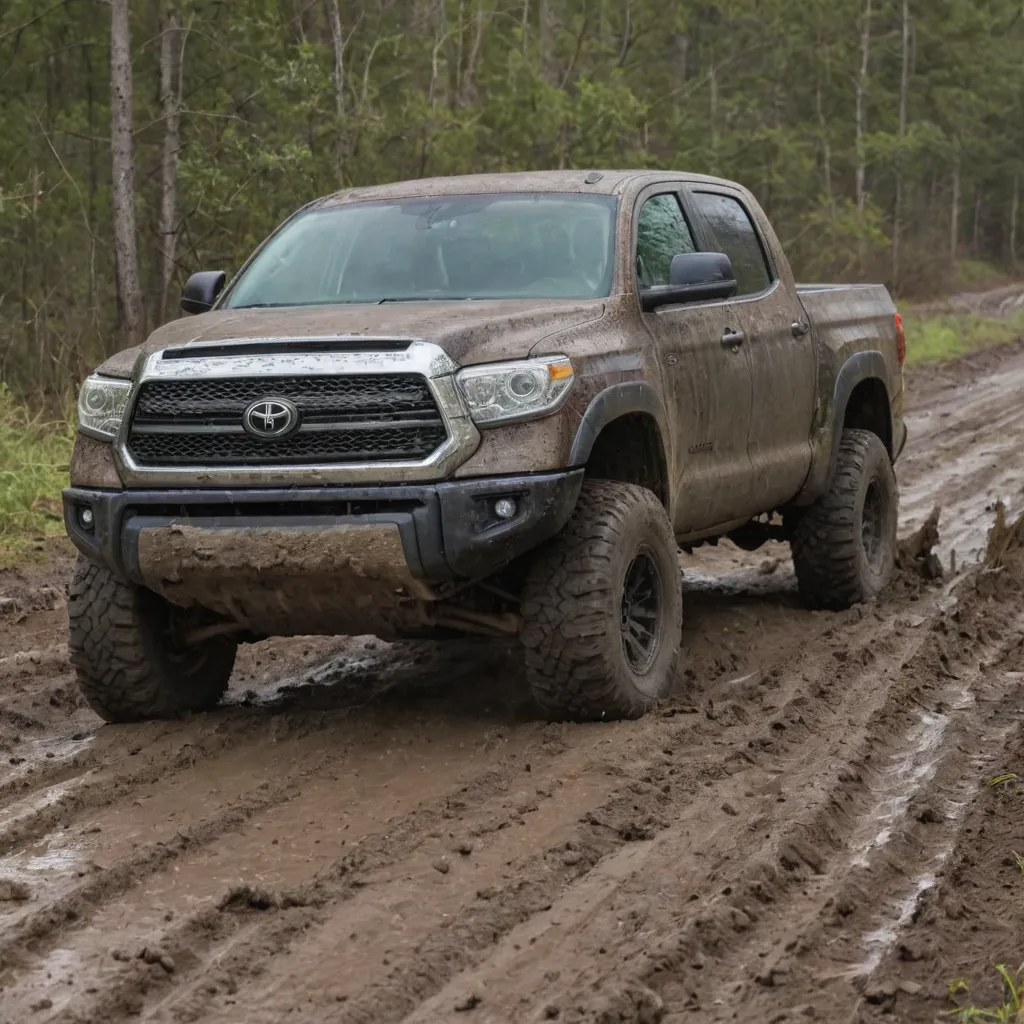
Unleash the Beast Upgrade Your Tundra's Engine
When it comes to the Toyota Tundra, the engine is the heart and soul of the beast. Maximizing its performance can unlock a whole new level of power and capability. Whether you're tackling challenging terrain, towing heavy loads, or simply craving an exhilarating driving experience, a well-tuned Tundra engine can deliver remarkable results.
One of the most impactful upgrades you can make is to focus on the engine itself. Investing in performance-enhancing components can dramatically improve your Tundra's output and responsiveness. Consider the following upgrades:
- High-flow air intake system: Replacing the stock air intake with a high-flow unit can significantly improve airflow, resulting in increased horsepower and torque. Look for systems that are designed specifically for the Tundra's engine and provide a noticeable boost in performance.
- Upgraded exhaust system: A performance exhaust system with larger diameter pipes and less restrictive mufflers can free up backpressure, allowing your engine to breathe more freely. This can translate to impressive gains in power and a more satisfying exhaust note.
- Tuning and engine management: Exploring the possibilities of engine tuning and management can unlock hidden potential in your Tundra's powertrain. Reputable tuning companies offer custom tunes that can optimize ignition timing, fuel delivery, and other parameters to maximize performance without compromising reliability.
- Forced induction: For those seeking even greater power, consider adding a supercharger or turbocharger system. These forced induction solutions can dramatically increase your Tundra's horsepower and torque, transforming it into a true performance machine.
It's important to note that while these upgrades can significantly enhance your Tundra's performance, it's crucial to ensure that the overall system is properly balanced and optimized. Work with experienced professionals who understand the Tundra's specific requirements and can provide guidance on the best combination of parts and tuning to achieve your desired results.
Taming the Suspension Optimize Your Tundra's Handling
The Toyota Tundra is a formidable workhorse, known for its rugged capabilities and impressive towing capacity. However, to truly unlock its full performance potential, it's essential to pay close attention to the suspension system. With the right upgrades and adjustments, you can transform your Tundra's handling, making it more responsive, stable, and capable of tackling even the most challenging terrain.
One of the key areas to focus on is the shocks and struts. The stock components may be sufficient for everyday driving, but if you plan to push your Tundra to its limits, upgrading to high-performance shocks and struts can make a significant difference. Look for options from reputable brands like Bilstein, FOX, or King, which offer adjustable settings to fine-tune the ride and handling characteristics to your preferences.
In addition to the shocks and struts, the suspension components themselves deserve attention. Upgrade to heavy-duty control arms, ball joints, tie rods, and bushings to enhance the overall stability and responsiveness of your Tundra. This not only improves handling but also helps to reduce wear and tear on the suspension system, ensuring a longer lifespan.
Another important aspect to consider is the tire and wheel setup. The right combination of tires and wheels can have a significant impact on your Tundra's handling and off-road capabilities. Look for high-performance, all-terrain tires that offer excellent grip and traction, and pair them with durable, high-quality wheels that can withstand the rigors of rugged terrain.
When it comes to fine-tuning the suspension, adjusting the ride height can be a game-changer. Lift kits or leveling kits can provide the additional clearance needed for larger tires and improved off-road performance, while also enhancing the overall stance and appearance of your Tundra.
Aerodynamic Enhancements Streamline Your Tundra's Profile
Maximizing the performance of your Toyota Tundra goes beyond just engine upgrades or suspension tweaks. One often overlooked but highly impactful area is aerodynamics. Enhancing the aerodynamic profile of your Tundra can deliver tangible benefits in fuel efficiency, top speed, and overall driving dynamics. Let's explore some of the key aerodynamic enhancements that can transform your Tundra's performance.
Investing in an aerodynamic body kit is one of the most effective ways to streamline your Tundra's silhouette. These kits typically include a front air dam, side skirts, and a rear spoiler or tailgate spoiler. Carefully designed to redirect airflow, these components can reduce drag and lift, resulting in improved fuel economy and enhanced high-speed stability. When paired with the right Insider Secrets - The Toyota Tundra Accessories the Experts Swear By, an aerodynamic body kit can truly unlock your Tundra's full potential.
Another key consideration is the impact of your Tundra's grille design. Replacing the factory grille with a more aerodynamic alternative can make a significant difference. Look for grilles with a smoother, more sculpted profile that minimizes air turbulence and improves airflow around the front of the vehicle. Some high-performance grilles even incorporate active shutters that can automatically adjust to optimize airflow at different speeds, further enhancing your Tundra's efficiency.
Wheel well liners and fender flares can also contribute to improved aerodynamics. These components help to smooth the airflow around the wheel arches, reducing drag and turbulence. By minimizing the disruption to the airflow, you can see improvements in fuel economy and top-end performance.
Finally, don't overlook the importance of aerodynamic side mirrors. Replacing your stock side mirrors with more streamlined, low-profile units can have a noticeable impact on your Tundra's overall drag coefficient. Look for mirrors with a sleek, aerodynamic design that seamlessly integrates with the vehicle's bodywork.
Braking Brilliance Maximize Your Tundra's Stopping Power
The Toyota Tundra is a powerful and versatile pickup truck, but its braking performance is often overlooked. However, with a few simple upgrades and maintenance tips, you can significantly improve your Tundra's braking capabilities, ensuring you have the stopping power you need in any situation. In this article, we'll explore the key factors that contribute to exceptional braking performance in your Tundra, and provide practical advice to help you get the most out of your truck's braking system.
Brake Pad and Rotor Upgrades: One of the easiest and most effective ways to enhance your Tundra's braking power is to upgrade the brake pads and rotors. Look for high-performance brake pads that are designed for heavy-duty use, such as those made from ceramic or semi-metallic materials. These pads offer improved heat dissipation, increased friction, and better overall braking performance. Pair the upgraded pads with larger, slotted or drilled brake rotors, which can also improve heat management and provide enhanced braking response.
Brake Fluid Maintenance: The brake fluid in your Tundra plays a critical role in the effectiveness of your braking system. Over time, brake fluid can become contaminated or degraded, which can lead to a spongy pedal feel and reduced braking performance. Regularly flushing and replacing your brake fluid, as recommended by the manufacturer, can help ensure your Tundra's brakes are operating at their peak efficiency.
Brake Line Upgrades: Another way to improve your Tundra's braking performance is to upgrade the brake lines. Stock brake lines are often made of rubber, which can expand under high pressure, leading to a mushy pedal feel. Replacing the rubber brake lines with braided stainless steel lines can provide a more direct and responsive braking feel, as well as increased resistance to expansion under pressure.
Brake Booster and Master Cylinder Maintenance: The brake booster and master cylinder are critical components of your Tundra's braking system, and their proper function is essential for optimal braking performance. Regularly inspecting and maintaining these components, including checking for leaks and ensuring proper fluid levels, can help maintain the integrity of your braking system and prevent any degradation in performance.
Tire Selection and Maintenance: The tires you choose for your Tundra can also have a significant impact on your braking performance. Look for tires with a high-performance tread compound and increased surface area for improved grip and braking traction. Additionally, maintaining proper tire pressure and regularly rotating your tires can help ensure consistent braking performance across all four wheels.
Tire Transformation Unleash Your Tundra's Grip
The right tires can make a world of difference when it comes to your Toyota Tundra's performance. Beyond just providing a smooth and comfortable ride, the tires you choose can significantly impact your truck's handling, traction, and overall capabilities. Whether you're tackling rough terrain, hauling heavy loads, or simply seeking a more engaging driving experience, optimizing your Tundra's tire setup is a crucial step in maximizing its potential.
When it comes to tire selection, one size certainly does not fit all. Your Tundra's factory-equipped tires may be a good starting point, but there are numerous aftermarket options that can take your truck's performance to the next level. Consider the following factors when choosing the right tires for your Tundra:
- Tread Pattern: The tread design of your tires can greatly influence their performance in various conditions. Aggressive, off-road-oriented tread patterns can provide superior grip and traction on uneven surfaces, while more highway-focused tires may offer better fuel efficiency and a quieter ride.
- Tire Size: Upgrading to larger tires can enhance your Tundra's stance and visual appeal, but it's essential to ensure the new tires are compatible with your vehicle's suspension and wheel well clearance. Consult with a professional to determine the optimal tire size that won't compromise your truck's handling or safety.
- Load Rating: If you frequently haul heavy payloads or tow large trailers, selecting tires with a higher load rating can help ensure your Tundra's stability and safety, even under the most demanding conditions.
- Terrain Usage: Are you primarily driving on the highway, tackling off-road adventures, or a mix of both? Identifying the terrain you'll be navigating will help you choose tires that are best suited for your specific needs.
Once you've selected the perfect tires for your Tundra, the fun part begins – unleashing their full potential. Proper tire inflation is crucial for optimizing performance and fuel efficiency. Use a high-quality tire pressure gauge to ensure your tires are inflated to the manufacturer's recommended PSI, which can typically be found in your owner's manual or on the driver's side door jamb sticker.
Proper tire rotation and alignment are also essential for maximizing the lifespan of your tires and maintaining your Tundra's handling characteristics. Regularly rotating your tires, typically every 5,000 to 8,000 miles, can help them wear more evenly, while regular alignment checks can help prevent uneven wear and improve your truck's stability and control.

